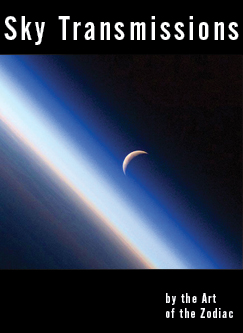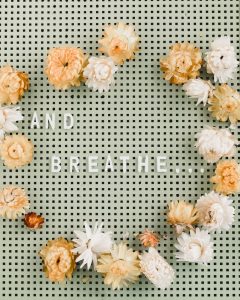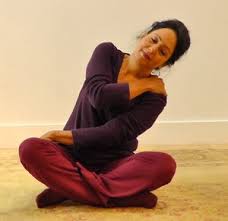
“There ain’t no answer. There ain’t gonna be any answer. There never has been an answer. That’s the answer.”
— Gertrude Stein
Astrology is a powerful tool for predicting major life events and choosing when to take action. Thinking about romance? Applying for a new job? There’s a right time for all those things, and Astrology can help you find it. That, however, is not our task at the moment. To get to the details, we must first comprehend the bigger picture.
Astrology can be defined as the correlation between celestial and terrestrial events. Which is to say, we look to the sky to see what will happen on Earth.
As I look to the sky, I see Venus, planet of love & beauty & passions, wistfully stretching her arms across the Moon’s home of Cancer. This is a soft place where one encounters topics of nourishment and safety. Soon she will awake into Leo, visible, home of the Sun, courageous, heart forward. Think of this transition from Cancer into Leo has Venus straight out of the bathtub and onto the center of the disco.
Exciting for some of us, jarring for others—especially those who’d rather hide from the spotlight. None of this is remarkable. Venus makes her way through all 12 signs of the Zodiac approximately once a year. What makes her ingress into Leo noteworthy, is that it’s where she stations retrograde.
You’ve heard of Mercury Retrograde? It’s like that: Venus stops in the sky and then appears to circle backwards. Just like Mercury, she tends to stir up all sorts of drama on the backstroke. Except where Mercury brings up issues of communication, Venus highlights issues of the heart..
Working with Venus RxFrom an astronomical perspective, the retrograde period is a time when Venus disappears, comes closest to the Earth, and changes from morning to evening rise. At the midpoint, she will have been cleansed in the heart of the Sun — a process Astrologer’s call cazimi.
This turning backwards signifies a time of renewal and contemplation. Just as Venus ends one cycle to begin again, we are asked to do the same.
While this Retrograde is going to pick up different stories for each of us, there are some universal themes: our relationships may be tested; our creative projects may be scrutinized; we may be asked to pick up an old project we’ve left behind. Many of us will connect with old loves and friends. Some of us will get terrible haircuts.
This is a time of reflection, integration and release. If I can offer any wisdom regarding the season ahead, it’s this: explore those desires with distance and wait to take action until Venus is direct. In the light of morning, you may see things differently.
Think of the following as an assortment of polished rocks to keep in your metaphorical pocket. Take one out now and then and roll it around nine your mind. May they be a source of contemplation and comfort.
Read for your Rising Sun. If you don’t know your Rising Sign, read for your Sun Sign. If you’re feeling moved, read all 12 and let your intuition decide what resonates.
DATES TO NOTEVenus Enters Leo: June 5, 2020Venus Stations Retrograde: July 22, 2023Venus Stations Direct: Sept 4, 2023
ARIES: Sometimes the most productive action one can take is to stop. When you find yourself frustrated or blocked with a situation—a human entanglement or creative endeavor—step aside. For an hour. Or a day. The answers will present themselves as answers do: when they’re ready. TAURUS: When we change, our relationships change. Friends. Partners. Mother. Father. Siblings. We may not always get to choose where we live or who surrounds us, but we get to choose how we relate to others and the spaces we inhabit. Where is home? What feels like home? Are you there?
GEMINIWho supports you? In the space between questions, do you ever stop to contemplate the answers? Or simply stop to listen to what the other person has to say. Perhaps it’s the speaking that’s the struggle? Who makes you feel heard? Identify those relationships and nourish them—even if only seeds.
CANCER: The future may bring some extra cash. Retractions are also to be expected. What’s the source of your sustenance and its toll? What do you need to sustain the life you’re called to live? If not the one you imagine.
LEO: Hold on. You may be tempted to jump ahead here. Summer tugging at your soul. The pull of being seen. Not yet. This is a time of contraction and expansion. A time to open yourself up and see what you’re made of. Metaphorically. Physically. You will be tested.
VIRGO: The voices in your head don’t always know what they’re talking about. They rarely do. Nor do they always have your best interest. Are you listening to your body? How does it feel in your gut? Heavy in your chest? A long, blue ribbon pulled from your throat. Keep pulling.
LIBRA: Imagine this: you’re on a seesaw. Remember those? You on one end. All your friends on the other end. It’s been forever, this back and forth and forth again. You’re dizzy. Nauseous. You jump off. Your friends are thrown in all directions.
SCORPIO: You’ve slayed the dragon. Collected the golden fleece. Let your imagination go where it may. So close to home, and now you’re asked to sacrifice your one true love. Ok. That’s an exaggeration, but you might seriously question what you’re doing with your life and who you’re spending it with.
SAGITTARIUS: Do you have fantasies about selling all your possessions to join an anarchist collective in the South of France, where you live on a yurt and raise ducks? Hold that thought. And then hold it a little longer.
CAPRICORN: I have a friend who says her sense of well being depends on understanding how the world works. Even if she’s wrong. It’s the perception of dominance that soothes her. I disagree. There’s a freedom in letting go, in facing the fact that you inhabit a world filled with creatures and events that are completely out of your control.
Trying to grip harder only hurts your hands.
AQUARIUS: Have you ever found yourself drawn to someone who’s so different from you that, somewhere deep down, you want to live through them? Maybe they exude a boldness and confidence that seems downright alien. Perhaps it’s a certain joy that’s infectious to be around.
I want you to take on that costume and wear it for a day.
PISCES: You’re going to make yourself sick. I get so upset when people tell me that. Partly because I know they’re right, and partly because they’re reinforcing a pattern of blaming the victim. This is a longer conversation. For now, remember this: your thoughts have power. Consider how you use them.




